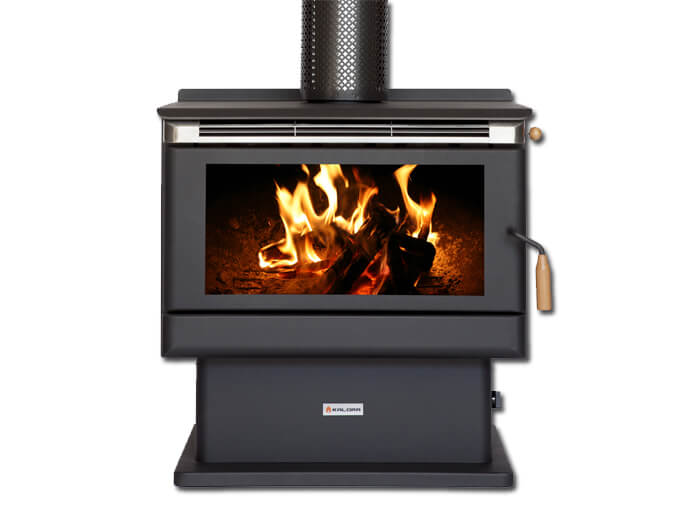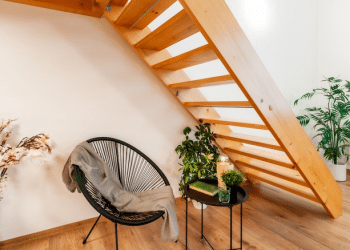Table of Contents

Myriad solutions exist for you to choose from when considering what type of heating to install in your home. You may install smart-home pellet heaters with WiFi controls. You may go for the good-looking and low-maintenance electric fireplaces. Then you may have been gripped by gas log fires as advertised in Melbourne (just remember that the “log” in this one is ceramic).
Or you may opt for gas-powered ducted heating systems. These are all great solutions for your heating. However, if you want to be responsible, eco-friendly, reduce your carbon footprint, and still heat your house the only choice you have is wood heaters.
Here are the main benefits of using wood-burning heating:
Eco-Friendly
Should you be concerned with global warming, and want to decrease your carbon footprint, while heating your home, you should consider wood as the source of energy. Burning wood for heating can help decrease greenhouse gas emissions. These are far lower when burning wood than the greenhouse gas emissions from all other fuels.
While growing, a tree will absorb CO2 from the atmosphere. Then, when the tree dies and decays, or is cut for wood and burned, it will release the exact same amount of CO2 back into the air. The CO2 will be fully balanced.
Renewable Energy
Have you considered what fuel used for heating is renewable? Well, if you are not using 100% photo-voltaic electricity, the only answer to this question is “wood”. Wood is the only energy source, which is easily available, and fully renewable. Each year trees are cut down, but new ones are planted. Hence wood heating uses a fully renewable energy source.
Security
You do not have to be living off the grid in order to consider heating security. If you would like to have an independent heating system, which will work steadily in the event of power failure, wood heating is the way to go. Your log-burning heater does not need anything other than a good supply of reasonably dried wood to keep your home cozy and warm.
Cost Efficiency
Normally being eco-friendly comes at a cost (consider buying a bio-tomato). This is not the case with your home heating. While using low CO2 emission, renewable fuel for heating, you will be actually saving money. Wood is much cheaper than oil, gas, or electricity. Wood is actually the cheapest energy source out there, and will dramatically keep your energy costs low.
Energy Efficiency
You could get all of the above benefits both from a wood fireplace and a wood heater. However, although the fuel is the same, these two appliances differ substantially. Their biggest difference comes from their energy efficiency.
The wood fireplace has the handicap of reaching only up to about 25% efficiency. This means that the energy generated from burning wood virtually goes out of the chimney. Wood burning heaters are a whole different story.
Wood-burning heaters are extremely energy efficient. Their energy efficiency reaches 80%. This means that 80% of the energy released from burning wood in your heater will stay in your home and heat it.
Coziness
Last, but definitely not least, no other heating system can beat a wooden fire greening you on a cold winter day. As homo sapiens have used wood for heating for a million years, it seems to have grown in our genes. Few people can resist the warmth and coziness radiating from your wood heater.
OK. By now nobody should have a doubt left that wood heaters really do provide the responsible heating solution for your home. However, there are a few things to consider in order to really squeeze out the maximum benefit from your wood-burning heater.
Size Matters
There are many different wood-burning heaters to choose from. Of course, you will select the style, color, and design which best fits your interior design. However, while selecting your heater, you will have to select the one, which generates the power needed for your room.
The size of your heater is extremely important. Should your heater be too small, you will not be able to heat your room properly, especially in the cold days, when this really counts. Should your heater be too powerful, you will be too hot and your efficiency will drop. So you will have to be extra cautious to find the Goldilocks zone.
The power of a wood-burning heater is measured in kilowatts (kW). Heaters standardly range from 2 to 15 kW. The bigger your room, the more kilowatts you will need.
You may have a professional calculate for you the necessary heater power, or you can do it yourself (the latter being more a rule of the thumb). To DIY divide the cubic meters (height * width * depth) of your room in meters by 14. You will get the power in kW needed from your heater.
How’s Your Insulation?
Irrespective of how energy efficient your wood-burning heater is, it will be of little use if you have poor insulation in your house. Insulation is a very important consideration when choosing your wood-burning heater.
The bigger the R-value of your insulation, the more heat that will be kept in your home, and the smaller the heater you will need. Better house insulation will bring forth the efficiency of your heater, and keep the warmth in your home.
Air
Wood burning is really a chemical process that uses a lot of oxygen. And oxygen comes from the air. Seemingly there is no big issue, but this is a point worth taking into consideration. Modern homes have plastic or aluminum windows and air-tight doors. Hence the air needed for your wood-burning heater may be insufficient.
Insufficient air would mean a bad burning process, more smoke, and less heat. You will be losing efficiency. Therefore take time to supply your wood-burning heater with a sufficient flow of air. This is usually done directly to the combustion chamber.
Wood
As simple as it may seem, the wood you use is of great importance to the efficiency of your heater. While different types of wood will produce different heating effects, what is most important is the moisture levels of the wood you use. Freshly cut wood will have high moisture levels. This would mean again a bad burning process, more smoke, less heat, and a clogged-up chimney.
Take extra care to burn only well-dried wood. In this way, all the benefits of your wood-burning heater will be realized.
Exhaust
The chimney of your home is the exhaust pipe of your wood-burning heater. It is very important that it be properly cleaned (at least once per year), well insulated (important to get the suction effect going), and large enough to accommodate the needs of your heater.
Without the proper exhaust, again your wood-burning heater will not be working properly, the fire will not burn, smoke will be much, and efficiency 9 – low. Maintain your chimney in perfect condition in order to enjoy your heater and its efficiency.
Ok. You are now ready to make a reasonable choice of heating your home.







